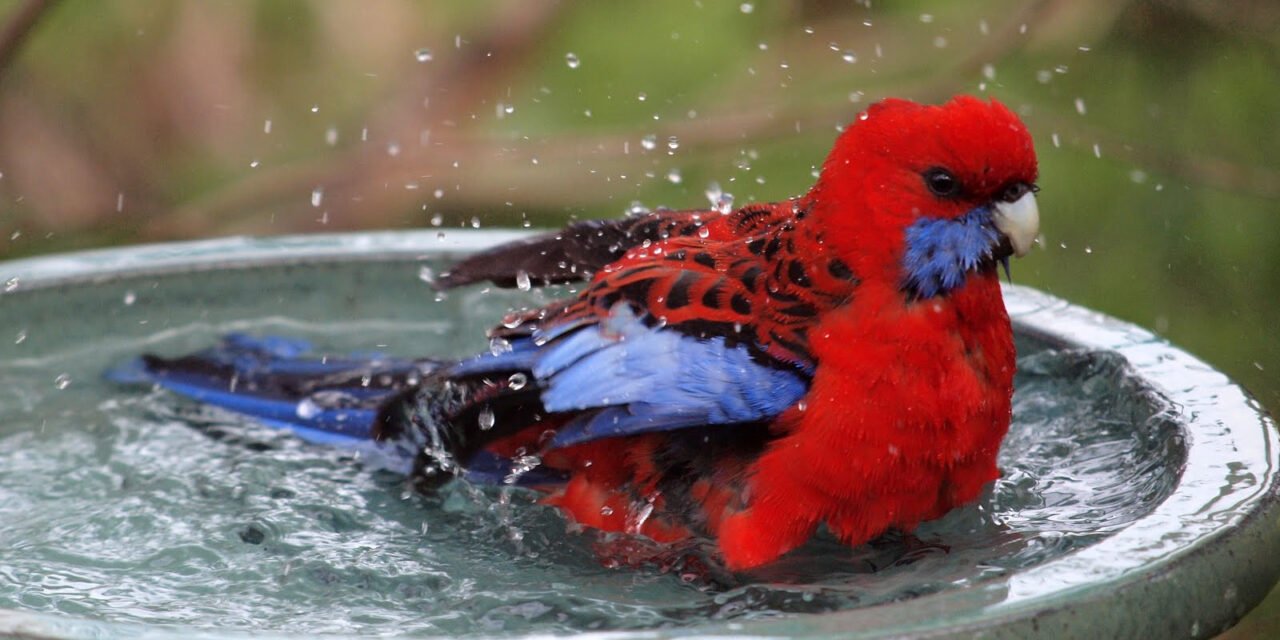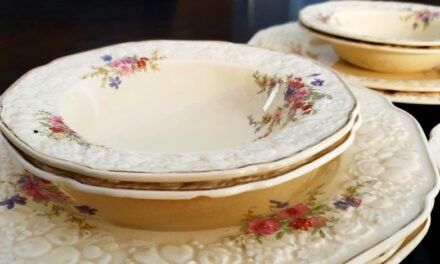Tanya Loos
In these uncertain times staring out the window watching multiple species of birds bathing in our bird baths is a soothing salve for the soul! Bird baths also allow us to observe wildlife at close quarters, carrying out natural behaviours such as drinking, bathing and preening on bushes nearby afterwards. And great for wildlife too – the provision of cool, clean water during droughts, extreme heat periods and after bushfires literally saves lives.
And bird baths benefit more than birds! ‘Bird baths’ is actually a misnomer, as they can provide essential drinking and bathing water for many of your garden visitors – from the smallest insects to larger animals, such as wallabies… This summer I have particularly enjoyed seeing a few Brown Tree Frogs floating in the bird baths near our outdoor toilet each night. The trick is to offer a wide variety of water receptacles as different species have different preferences. All bird baths need a rock or stick to allow animals to climb out again.
Managing a suite of bird baths involves keeping them scrupulously clean by scrubbing with a stiff brush occasionally and replacing the water regularly. Refilling the bird bath is very rewarding, as sometimes the animals are waiting nearby for their fresh water, or even forming an orderly queue!
Shallow bird baths placed at ground level will provide water for small birds, such as fairy-wrens, and ground living fauna, such as echidnas and blue-tongue lizards. If you suspect your garden has wandering cats, avoid ground level baths.
Pedestal bird baths are a popular choice and commercially available. The provision of a stick or some rocks is important as many are glazed ceramic and can be very slippery. Avoid bird baths made of metal as the water may get too hot in summer.
All bird baths need to be located near trees or shrubs, which provide shelter and perching spaces for small birds. Small birds need to feel safe when using a bird bath, and shrubs provide a few vantage points to allow the birds to check for danger before drinking or entering the water. A pedestal bird bath located in the centre of the garden in an open grassy area will be visited by only the boldest of birds and other animals!
To avoid birds flying into windows after their bath, place baths either very close to the window (0.5 metres) or well away.
Bird baths placed near the house allow for plenty of enjoyment as you watch through the windows, but consider a deeper bird bath away from the house in a quieter part of the garden for your more timid backyard visitors. Some bird bath aficionados have seven or more baths. Caring for a suite of bird baths is an excellent addition to your enjoyment in the garden – for you and for your local wildlife!
This is an edited extract from Living with Wildlife: a guide for our homes and backyards – available at Paradise Bookshop.
Related stories:
Tanya Loos is a local naturalist, author and environmental consultant who loves to work in the environmental not-for-profit sector. She is the author of “Daylesford Nature Diary” available from her website or from Paradise Books in Vincent Street, Daylesford.
Have you got any nature questions for Tanya? Send them in!





